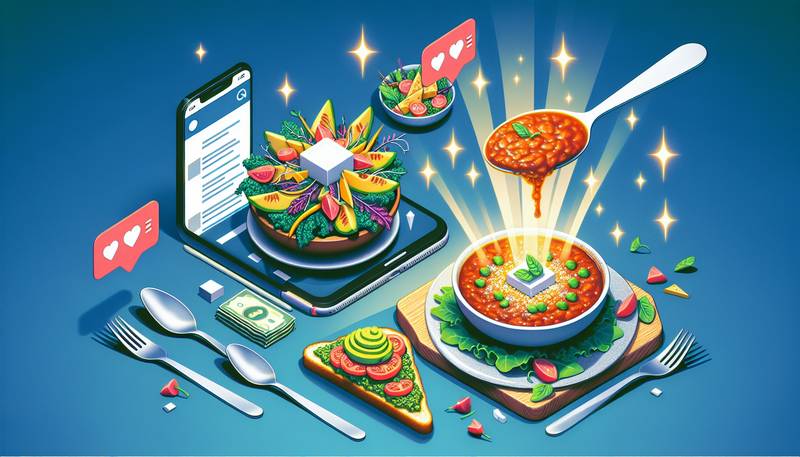Food Styling: The Art of Making Food Photogenic

Crafting a Delicious IllusionFood styling is an art form, much like painting—except instead of a brush, you wield a spatula, and instead of a canvas, your masterpiece is the dinner plate. The aim? To make a dish so alluring that it could practically jump off the table and declare its love for your taste buds. Just imagine a steak so perfectly seared that the grill marks could have their own Instagram account! But for those who aren’t culinary wizards, fear not. With a few tricks up your sleeve, anyone can create a food presentation that makes even a sad slice of toast look like the star of a Michelin-rated restaurant. Just remember, not everything needs to be an abstract interpretation of a sandwich!Choosing the Right Plate: A Match Made in Culinary HeavenSelecting the ideal plate is serious business; you wouldn’t wear neon leggings with a tuxedo, would you? Each dish deserves a stage worthy of its flavors. You’ll want to consider:- The Color: A white plate is like the blank page of a novel—perfect for telling your delicious story. Dark plates give food a dramatic flair, as if they’re auditioning for a role in a blockbuster.
- The Size: Oversized plates can make a single meatball look like a sad little peasant, while tiny plates might make a feast look like the food equivalent of a “dinner and a movie” date.
- The Shape: Round plates are traditional, but a square or asymmetrical plate can say, “I’m different; I’m edgy. Let’s be adventurous!”
Keep in mind that the plate is the backdrop for your culinary masterpiece. Think of it as the frame to a beautiful painting, though you definitely don’t want it to distract from the artwork!Garnishing: The Finishing Touch That Saves the DayLet’s face it: garnish is the superhero of the culinary world, swooping in at the last moment to save an otherwise ordinary dish. Fresh herbs can elevate a plate from “meh” to “Mamma Mia!” faster than you can say “parsley.” Consider the following heroes of the garnish world:- Fresh Herbs: Basil, cilantro, or chives—these vibrant little greens are the confetti of the food world, making everything look like a party.
- Citrus Zest: A sprinkle of lemon or lime zest can kick your dish in the taste buds and make it look jazzier than a Broadway show.
- Edible Flowers: Yup, you heard that right. Say goodbye to dull colors and say hello to colorful blossoms that add a feminine touch. Just make sure they’re edible, unless you want to host a very different kind of dinner party.
Remember, garnish wisely; too much can look like you’ve decorated for a wedding—in the middle of a cooking contest.Lighting: The Unsung Hero of Food PhotographyIf food is the star of the show, lighting is the director, creating that perfect ambiance for a flawless performance. Natural light is often the best option, casting a soft glow that makes every dish look like it belongs in a food magazine. If only we had lighting that made us look as good as our dishes!For those days when the weather outside is less than cooperative, consider investing in some good artificial light. Just stay clear of fluorescents unless you want your meatloaf to resemble some kind of alien life form.The Great Plate Arrangement: Dancer’s DelightPlating is akin to choreography. Each component should have its moment in the spotlight without stepping on anyone’s toes. Here are some techniques to get those dance moves just right:- Layering: Build height and dimension. Think of your plate as a 3D puzzle.
- Negative Space: If everything is crammed together, your dish might feel like a crowded subway car at rush hour. Give it some breathing room!
- Placement: Try the “clock method.” Imagine your plate is a clock and arrange the food like it’s about to strike noon!
A well-plated dish can be a spectacle all on its own, but be mindful—no one likes a show-off!When All Else Fails, Get CreativeSometimes, despite your best efforts, the food just insists on looking like a pile of mush. In situations like these, creativity comes to the rescue! Consider serving it in unexpected ways, like using mason jars or even frying pans. And if the food still refuses to cooperate, just remind yourself that it’s not about perfection; it’s about having fun in the kitchen. Plus, remember—an ugly plate can still taste divine. After all, if a dish is delicious enough, people might just close their eyes and pretend it’s a work of art! Serving Up the Final DishIn the end, food styling is about more than just looks; it’s about the experience that brings people together. So whether your dish looks like a masterpiece or a playful toddler's art project, the laughter and joy shared over that meal will always be the true star of the show!
|
|







